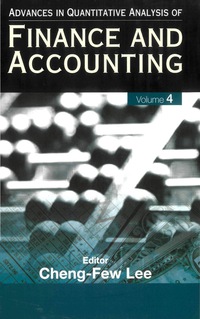Question
The Balance -- Reaganomics is a political moniker for the economic policy set out by President Ronald Reagan (R) to address the 1980 recession and
The Balance -- Reaganomics is a political moniker for the economic policy set out by President Ronald Reagan (R) to address the 1980 recession and stagflation. Reagan's position was dramatically different from his predecessors. Whereas prior presidents of both parties such as Lyndon Johnson (D) and Richard Nixon (R) had expanded the government's role to address economic downturns, Reaganomics rejected the role of government to remedy an ailing economy. Instead, a series of corporate tax cuts and tax cuts for the wealthy were implemented all designed to grow the economy. As proposed, when companies get more cash they hire new workers, invest in new capital, and expand their businesses.
Tax cuts under Reagan sharply decreased the income tax rate for individuals earning $108,300 or more and corporate tax rates were cut from 46% to 40%, although Reagan offset these tax cuts with tax increases elsewhere by raising Social Security payroll taxes and cutting deductions for middle class households--effectively raising middle class taxes. And although promised, government spending wasn't lowered under Reagan, it just shifted from domestic programs to defense. Reagan increased spending by 9% a year, from $678 billion to $1.1 trillion. Combined with tax cuts on high-income households and corporations, the result was that the federal debt almost tripled, from $998 billion in 1981 to $2.857 trillion in 1989.
Also as part Reaganomics, Reagan pledged to curtail the role of the federal government and its regulation of business. Reagan deregulated TV, long-distance telephone service, interstate bus service, and ocean shipping. He essentially ended the bank regulations put in place in response to the bank crisis of the Great Depression. But other than those initiatives, during his eight years in office Reagan did little to reduce or change regulations affecting health, safety, and the environment.
1A. Using the Neo-Classical Macro Model, set out the U.S. economy in 1980 with an unemployment rate of 7.3% and economic growth for the year at -0.3% labeling AD, AS, P, and Y with the subscript 1.
2A. Define supply side economics.
2B. Set out a causal chain to support supply side economics theory.
2C. Argue (in less than 50 words) whether the proposed economic plan of Ronald Reagan was Neo-Classical economics.
3. Return to the Neo-Classical Model in (1) and make changes to the Model as predicted by the the causal chain set out in 2B.
4. Over the last 90 years, average economic growth and the average unemployment rate by President has been:
Roosevelt -- 9.3% ; 4.6% (1940-1945)
Truman -- 1.3% ; 4.3%
Eisenhower -- 3.0% ; 4.6%
Kennedy --4.4% ; 6.0%
Johnson --5.2% ; 4.2%
Nixon -- 3.5% ; 5.1%
Ford -- 1.6% ; 7.8%
Carter --3.2% ; 7.2%
Reagan --3.4% ; 7.6%
Bush (George H.) --2.2% ; 6.2%
Clinton --3.9% ; 5.0%
Bush (George W.) --2.6% ; 5.8%
Obama -- 1.6% ; 7.2%
Trump -- 1.0% : 6.2%
Using information in the Technical Note to Module 12, identify the dominant economic philosophy of each presidential administration.
5A. Using economic growth and unemployment rates as measures of an economy, which major economic philosophy historically seems to have produced the most prosperous economy under a Presidential administration.
5B. Using economic growth and unemployment rates as measures of an economy, which major economic philosophy historically seems to have been the least effective at producing a prosperous economy under a Presidential administration.
5C. Using economic growth and unemployment rates as measures of an economy, argue which major economic philosophy historically seems to have been the most effective at producing a prosperous economy.
Step by Step Solution
There are 3 Steps involved in it
Step: 1

Get Instant Access to Expert-Tailored Solutions
See step-by-step solutions with expert insights and AI powered tools for academic success
Step: 2

Step: 3

Ace Your Homework with AI
Get the answers you need in no time with our AI-driven, step-by-step assistance
Get Started


